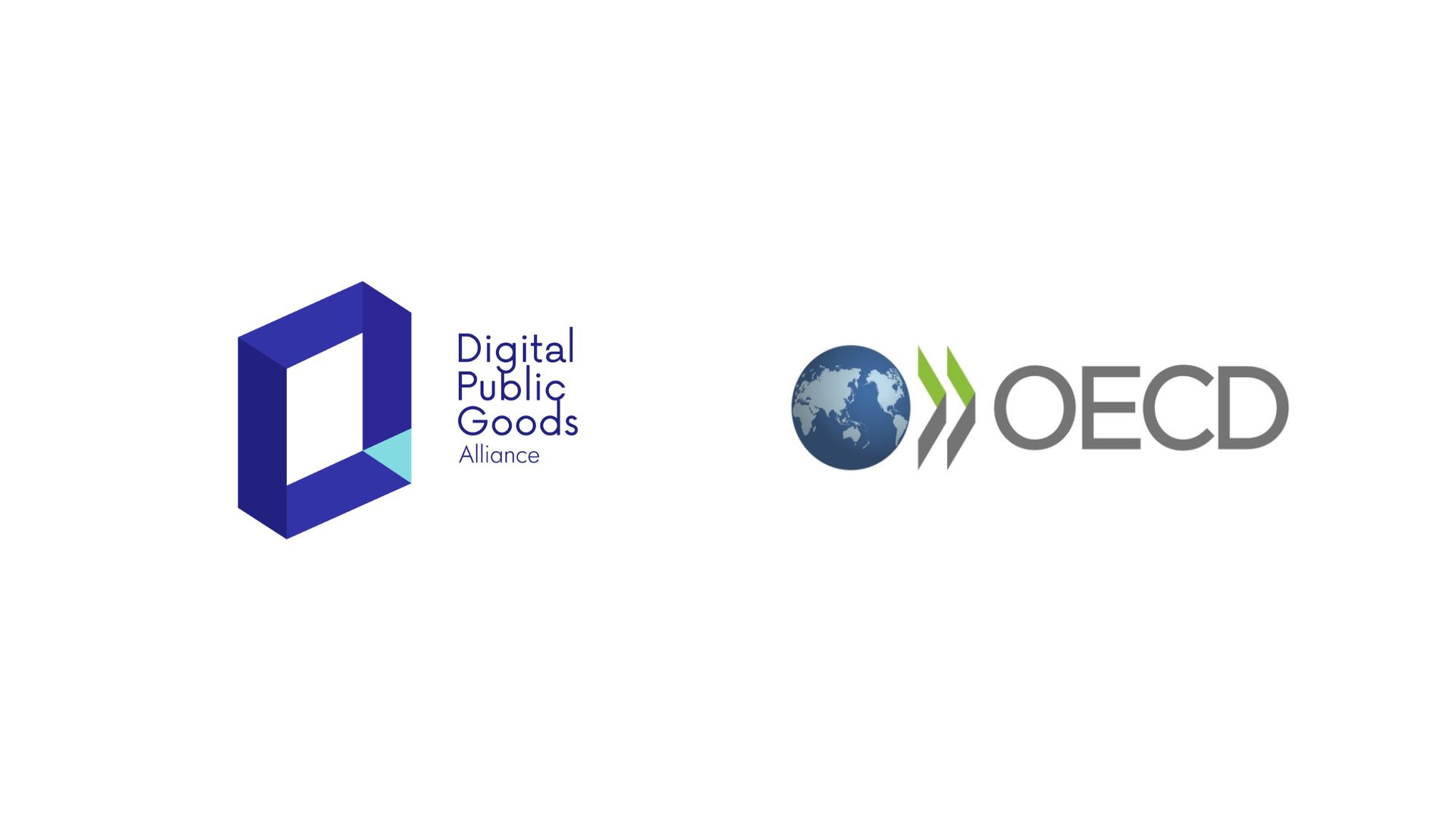Advancing safe, inclusive, and equitable Digital Public Infrastructure for all

Summary of country meeting convened by OECD and the DPGA in support of G20
Faced with recurrent shocks and crises, countries around the world are looking to build more resilient and inclusive digital foundations for public and private service delivery. As they enter this more advanced phase of their digital journeys, all economies (advanced and emerging), need to ensure that digital infrastructure enables and drives inclusion, empowerment, and safety for citizens, as well as continued innovation. India’s G20 presidency offers a unique opportunity to convene the international community around advancing this agenda, with the subsequent G20 presidencies of Brazil and South Africa in a strong position to offer continued leadership in 2024 and 2025.
With this framing in mind, policy makers, including G20 Sherpas, Ministers for the Digital transitions and more gathered together last week to discuss how to advance safe, inclusive, and equitable digital public infrastructure for all, and how to learn from each other in the process.
The event, hosted by the Digital Public Goods Alliance (DPGA) and the OECD, saw interventions by participants around three main topics: 1) the transformative potential in digital public infrastructure (DPI); 2) how digital public goods (DPGs) can change how we build and govern DPI; 3) Advancing DPI as part of international development assistance. Key takeaways from the meeting (available here below) will feed into G20 discussions under the 2023 G20 Indian Presidency, to inform debates amongst G20 sherpas, digital economy and development communities.
Segment 1: The transformative potential in Digital Public Infrastructure
| Key Takeaways: – Ensuring fairness requires a human-centric approach – Solutions must avoid creating new forms of digital divides – Crises challenge societies, governments and create new expectations – but DPI is a way to tap into the potential of economic opportunities – We must not underestimate the potential of solutions, or the scale of challenges, across countries – Examples shared here show the value of sharing experience and learning from each other and of adaptable and flexible solutions – Collaboration is needed inside governments, inside countries, between countries, and with the whole ecosystem to overcome silos, and create solutions that can be scaled to provide services to citizens |
Technology is only as valuable as the public value it creates. In this segment, speakers highlighted that good digital public infrastructure requires a human-centric approach, taking into account the end users of the solutions adopted and ensuring that in developing solutions new digital divides are not created. In particular, harnessing the full potential of DPI depends on four principles:
- Inclusion in digital services to close the digital divide;
- Developing countries require more support to accelerate connectivity;
- We must use a human-centric approach; and
- Digital identity is a core enabler of safe and inclusive access to services.
The interventions in this segment underscored the value of sharing experiences and learning from each other, while emphasising the importance of adaptable and flexible solutions. Collaboration is vital not only within governments and countries but also between countries to overcome silos and develop solutions that can be scaled to provide services to citizens.
Crises pose significant challenges to societies and governments, and DPI is a way to leverage economic opportunities amid these challenges. However, it is important not to underestimate the potential of solutions, nor the magnitude of the challenges they aim to address. Pursuing an ambitious agenda must not result in a one size fits all approach.
India’s own experience informs its G20 presidency. The scale of challenge in India cannot be underestimated – in just a decade over 800 million people acquired a digital identity and 600 million people got access to financial services, resulting in the single largest jump in financial inclusion ever measured. Sharing this experience will allow others to adopt DPI and adjust it to their specific context.
Segment 2: How Digital Public Goods (DPGs) can change how we build and govern DPI
| Key Takeaways: – DPGs are a means of ensuring a country maintains control over its digital sovereignty – Implementers of DPGs should share best practices and learnings – this can help avoid vendor lock-in, keep costs down, and create local and regional opportunities – Context matters – adopted solutions must take context into account, adapting DPGs to each implementation scenario, avoiding a one size fits all approach – Do not reinvent the wheel – building and sharing code is important, but reusing existing code can help make use of and support existing solutions – The private sector is a key player, and must be able to plug into DPI |
Digital public goods can allow countries to regain sovereignty over their digital transformations. By adopting DPGs, governments are required to become part of the solution, to engage with the ecosystem and to understand the technology in order to adapt it to each particular context. Examples in this segment included global best practices of how countries can share learning experiences with one another where DPGs can help avoid vendor lock-in, support sovereignty, and keep costs down, while creating opportunities for ICT vendors and building local skills and competencies. This creates a win-win where participants gain from the investment being made because the goods are non-exclusive by definition.
Ultimately, countries must adopt what makes sense for their particular context. While political support is critical for digitalisation, it is not always crucial whether a product is open source or not; it is about being able to take advantage of available technology. We must move beyond sharing code, to also reusing existing technology, taking into account what already exists and if it could work in a particular context.
Finally, while digital public infrastructure should be publicly governed, it should also enable the private sector to participate in order to unlock powerful economic outcomes, while allowing users to be active, rather than passive consumers.
Segment 3: Advancing DPI as part of international development assistance
| Key Takeaways: – DPI is an attractive investment for LMICs and their partners – Digital transformation is long-term – building DPI requires strong government leadership, and sustained investment along with capacity building support – Long-term financing is difficult to source and public development assistance needs to keep a sharp focus on adding value and being catalytic and co-ordinated – To unlock DPI, development partners can play multiple roles according to their comparative advantage – Each country is on its own digital transformation journey and government engagement is integral to its success – Global co-operation is needed around the development, dissemination, adaptation, and adoption of digital public goods that can provide components of DPI – Valuable research is ongoing |
In this segment representatives of development co-operation agencies were invited to reflect on their experiences and outline why and how digital public infrastructure is a development issue.
Participants concluded that there is great potential for DPI for low and middle income countries, and it’s an exciting moment to leverage this. DPI can help level the playing field and provide multiplier and scale effects (e.g., enabling new businesses to flourish and reaching new markets). To do that, the global community and G20 should prioritise DPI that is good, secure, and with safeguards, being mindful from the beginning of the risk of violation of rights. The right governance policies and regulations are essential – and having them on paper is not enough, we need strong and accountable institutions.
Digital transformation is very challenging, requiring patience and a long term approach, particularly in less developed countries. Each country is on its own digital transformation journey and choices regarding the best ways to put DPI in place should be context-specific and country-driven. Government engagement in the process is integral to its success and international sharing of lessons and good practices can be a useful resource. It is therefore important to: take a backcasting approach, beginning with a clear view of what the objective of a digital intervention is in the long term and then setting out short term steps; use government leadership to unlock data; and ensure a legal framework to set rules for use of personal data.
DPI has one of the most persuasive and multiplicative rationales that development has to offer. There is leadership on this issue in all parts of the world, and investments in DPI make all other investments much more effective. In order to unlock DPI, development partners can play multiple roles according to their comparative advantage, ranging from shared principles, providing finance, strategic support, and clear view of long-term development goals that DPI can help to achieve, and technical assistance on safeguards in strong and accountable governance and legal frameworks.
While it can be challenging to secure long-term funding for foundational DPGs, philanthropic and public funders play a key role in filling this gap. Leveraging multilateral development banks can also allow us to ensure that DPI investments are closely integrated with downstream finance and leverage the large social portfolios of these institutions when it comes to investing in DPI.
Finally, valuable research is ongoing in this area, particularly focused on bottlenecks and how to safeguard against potential negative impacts of DPI in low- and middle-income countries. The outcomes of this research should be used to guide future programming.
Shortening the DPI-learning and adoption curve
Across these segments, it is evident that a global community of governments and multilateral organisations is emerging and focusing on how international digital cooperation and DPGs, in combination with adequate financing, can usher in an era of safe, inclusive, and equitable DPI for all. This is a critical policy issue requiring governments to lead collaborations with key stakeholders, businesses, and civil society, to promote digital public goods and establish trustworthy, inclusive, and interoperable governance for DPI. The willingness of countries across income levels to share learnings, best practices and technologies in this process will play a key role in achieving this ambitious goal.
The Digital Public Goods Alliance (DPGA) is a multi-stakeholder initiative with a mission to accelerate the attainment of the sustainable development goals in low- and middle-income countries by facilitating the discovery, development, use of, and investment in digital public goods.
The Organisation for Economic Co-operation and Development (OECD) is an international organisation that works to build better policies for better lives. Our goal is to shape policies that foster prosperity, equality, opportunity and well-being for all. We draw on 60 years of experience and insights to better prepare the world of tomorrow.
